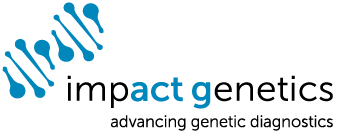
What is Retinoblastoma? (RB)
Retinoblastoma (Reh-tin-oh-blast-oma) is a cancer of one or both eyes that occurs in young children. Retinoblastoma affects about 1 in 15,000 live births, and an estimated 9,000 children develop the cancer each year around the world. Retinoblastoma affects children of all races and both boys and girls.
The retinoblastoma tumor(s) originate in the retina, the light sensitive layer of the eye that enables the eye to see. When the tumors are present in one eye, it is referred to as unilateral retinoblastoma, and when it occurs in both eyes it is referred to as bilateral retinoblastoma. 60% of cases involve only one eye (unilateral) and the rest (40%) affect both eyes (bilateral). The majority (90%) of retinoblastoma patients have no family history of the disease.
The most common early sign of retinoblastoma is a white glow in the child’s eye. This cancer is easy to diagnose, and treatment is very effective when tumors are found early.
Genetics
Errors (mutations) in the RB1 gene initiate retinal tumors. RB1 mutations can be inherited from a parent (10%), but most occur spontaneously pre-conception or during the baby’s early development (90%). In 2% of unilateral retinoblastoma, a retinal tumor is initiated by multiple copies of the MYCN gene (RB1 gene is normal).
At Impact Genetics, we detect 96% of RB1 mutations.
Non-heritable retinoblastoma
Of children with unilateral disease and no family history of retinoblastoma, 85% have normal constitutional RB1 genes; a single eye tumor is initiated when both copies of the RB1 gene are damaged in an early retinal cell or when there are multiple copies of the MYCN gene. Such a tumor is not heritable.
Heritable retinoblastoma
All bilateral patients, most unilateral patients with family history, and 15% of unilateral patients without family history carry a constitutional RB1 mutation on one copy of the RB1 gene, predisposing them to retinoblastoma and other cancers later in life; the second RB1 gene is damaged in each developing tumor. The affected personʼs constitutional mutation is heritable and can be inherited by up to 50% of his/her offspring. Note that most new cases of bilateral retinoblastoma (without family history) result from a new constitutional mutation and are not inherited from a parent.
The majority (94%) of retinoblastoma patients tested by Impact Genetics are the first individuals to be diagnosed in a family. As of January, 2015, 141 out of 2,141 patients (6%) indicated when tested for RB1 mutations that one or more family members were previously diagnosed with retinoblastoma.
◀ Retinoblastoma Test Description || Benefits of Impact’s RB Test ►

